My thoughts still dwell on the healers, Ngangkari, of the western desert of Australia.
Any attempt to understand the world of the native Australians (or any other surviving culture that comes before the rise of so-called civilizations) is hampered if it is limited by the current view of what it is to be human. This different world cannot be grasped by only a study of the tools used, the burial practices or the revelations 0f DNA for they are embedded in a consciousness quite foreign to modern ways of making sense of the world. That said, it is important to realize that both worlds express what it is to be human. Initially it is best to ignore ideas we may have of progress or superiority. What is real and objective for us is not their experience. Nevertheless both ways of being in the world are alive now and contemporary. This is a gift for modern consciousness, especially as it has no frame work to elucidate it. Tools and burial methods without language, music, stories and perceptions tell us little of men or women who breathed, had desires and memories, knew things we don’t and had no interest in things we know.
Bruce Chatwin in his book Songlines describes an experiment with young children in Australia. They were a mixture of native and white who were asked to draw themselves. We know how little children usually draw people but the native children drew their landscape. For me this says that they experienced no separation from nature and the environment which is the opposite of what we moderns experience, a radical sense of separation.
It is widely recognized that we must get back to nature. It can no longer be seen as just a resource for our needs and pleasures. But how?
We generally look for our common ground in the sense world. We all see the same plants, the same sun and moon, feel the same cold and taste the same grape. Now this is one of the assumptions we have to give up. It is after all a consequence of our own particular consciousness. Now it is widely recognised that consciousness and world are wrapped in a oneness. The commonality of ‘modern’ ways of being in the world and of former ways is embedded in a non-sense experience. The very word tells us how thoroughly we are convinced the real world is only what we see, hear and touch and anything else is nonsense. Yet for science there is something else, a world reduced to particles and primary forces. The human quest to understand the world and the self ends in a cul-de-sac.
The non-sense world (as we will allow ourselves to call it) which I have pointed to, is not irrational and opposed to clarity of thought. In fact thinking has its origin in this world beyond the senses. Thinking today is often seen as a mechanical process dependent on other factors like emotions, brain structures and gender. Thoughts linked to feelings or habit or self-interest may well resemble mechanisms.Thinking can free them up.Clear thoughts have no gender, no race, no colour, no age, no class; they avoid generalizations and don’t prejudge. Thinking is the gateway to this non-sense world.

